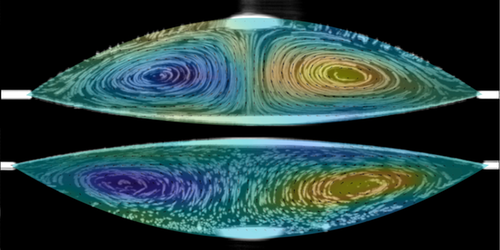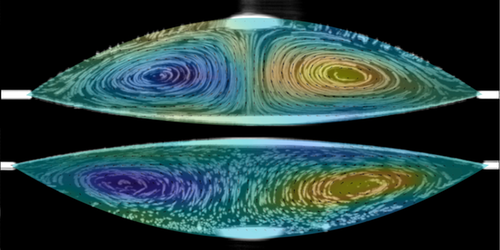Gravity-Driven Flows in Two-Fluid Drops
Drops of spilled coffee dry and leave behind ring-shaped patterns. The shape and uniformity of these patterns are determined by fluid flows that drive particle deposition within the drops. Now, Fouzia Ouali of Nottingham Trent University in the UK and colleagues have shown that in the case of drops composed of two fluids, gravity, not surface tension, as researchers previously thought, dominates convective flows. The team says that this result could allow for improved control of material deposition in applications like printing that involve drying drops.
In a drop containing two fluids, unequal evaporation of the fluids leads to changes in the drop’s local composition. This composition change can give rise to gradients in both the surface tension and the density of the drop, two parameters that can drive fluid flow.
To see which effect dominates, Ouali and colleagues studied water-ethanol drops and water–n-butanol drops in which they suspended micrometer-sized polystyrene particles. They placed a 1-mm-diameter drop on a flat surface and then monitored flows within the evaporating drop by tracking the motion of the particles. They repeated the experiment for drops on surfaces tilted at different angles to determine the relative importance of gravity versus surface tension in controlling the flows.
The team found that the direction of fluid flow within the drop was unaffected by the angle of the surface—the fluid circulated in the same direction for drops that were both right-side up and upside-down on horizontal surfaces. The team says that this finding suggests that fluid buoyancy and hence gravity—not surface tension—drives fluid flow.
This research is published in Physical Review Letters.
–Christopher Crockett
Christopher Crockett is a freelance writer based in Arlington, Virginia.





